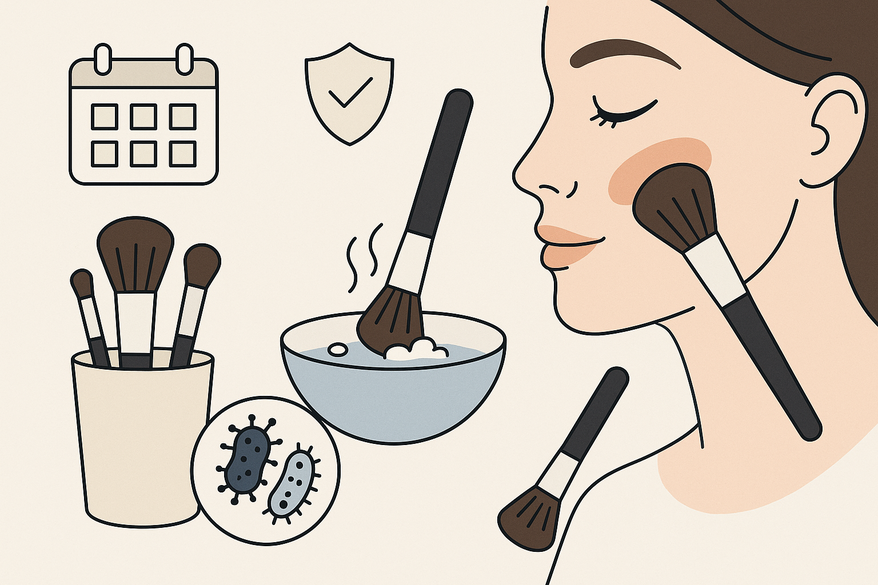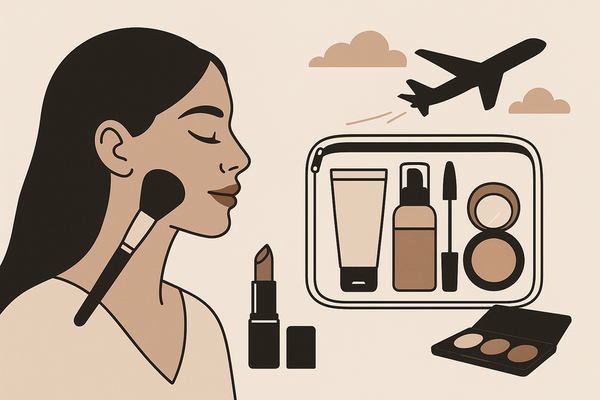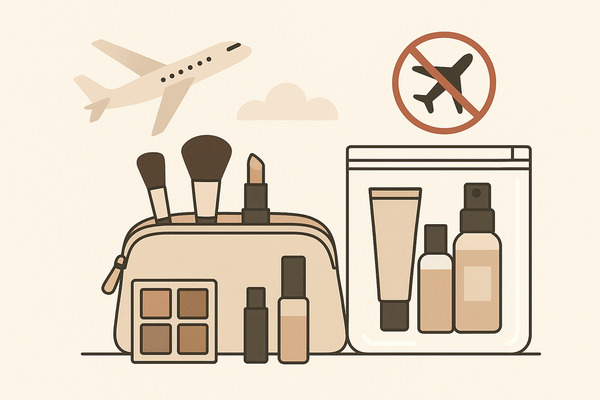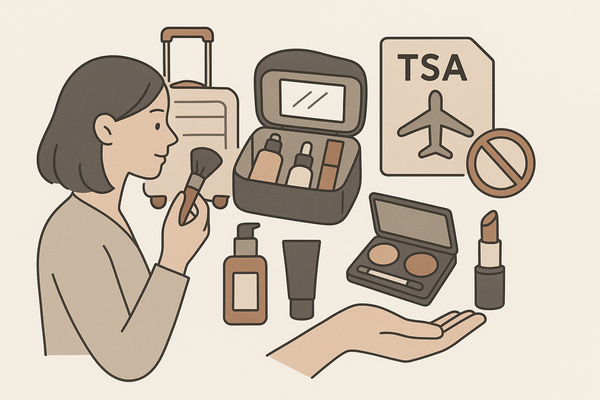Clean Makeup Brushes: Essential Hygiene Tips for Healthy Skin
Clean makeup brushes are crucial for flawless makeup and healthy skin. Learn essential hygiene tips, how often to wash brushes, and why routine matters.

Estimated reading time: 7 minutes
Key Takeaways
- Dirty brushes cause breakouts, irritation, and uneven makeup.
- Weekly and biweekly cleaning schedules keep tools hygienic and long-lasting.
- Proper drying and storage prevent mold, bacteria, and bristle damage.
- Sanitize sponges, replace mascara regularly, and never share tools.
Table of Contents
- Section 1: The Importance of Clean Makeup Brushes
- Section 2: Detailed Cleaning Techniques
- Section 3: Additional Makeup Tool Hygiene Practices
- Section 4: Comprehensive Makeup Hygiene Tips
- Conclusion
- FAQ
Section 1: The Importance of Clean Makeup Brushes
Keeping your brushes clean is more than a chore—it’s a health must.
- Dirty brushes trap oils, dead skin cells, and bacteria, pushing grime into pores and causing breakouts or infections.
- Built-up debris makes bristles stiff and dull, leading to uneven makeup, streaks, and color mismatches.
- Regular cleaning saves you money by keeping bristles soft, reducing shedding, and extending brush life.
Skin-Health Consequences:
- Clogged pores lead to blackheads and acne.
- Bacterial growth causes redness and irritation.
- Infections may require medical care.
Sources: Beauty By Ane Blog, Maange, Glo Skin Beauty
Section 2: Detailed Cleaning Techniques
Subsection 2.1: Step-By-Step Cleaning Process
Follow this routine to scrub away oils, pigment, and germs:
- Rinse under lukewarm water, pointing the spray downward to protect the ferrule glue.
- Add gentle soap or baby shampoo (pH-balanced or a dedicated brush cleanser).
- Swirl bristles in your palm or on a silicone mat until makeup dissolves.
- Rinse until no suds or color remain.
- Gently squeeze out water with a lint-free towel.
- Reshape bristles and lay flat overnight with tips hanging off the counter.
Pro tip: Between deep washes, spritz bristles with 70% alcohol and blot on a clean towel to cut bacteria fast.
Warning: Never soak the whole brush—water in the ferrule can loosen bristles.
Sources: Glo Skin Beauty, Maange
Subsection 2.2: How Often to Wash Brushes
Keep a steady cleaning schedule so germs don’t take hold:
- Foundation & cream-product brushes: deep clean once a week.
- Powder, blush & eyeshadow brushes: deep clean every 1–2 weeks.
- Daily surface wipe: mist with brush spray or swipe a microfiber cloth between deep cleans.
- Adjust frequency for oily or sensitive skin types.
Source: Maange
Section 3: Additional Makeup Tool Hygiene Practices
Subsection 3.1: Sanitize Makeup Sponges
Sponges trap bacteria but deliver a flawless finish:
- After each use, lather with gentle soap and warm water until suds run clear.
- Squeeze out moisture and air-dry in a clean, ventilated spot.
- Deep sanitization: dampen a microwave-safe sponge and heat for 1–2 minutes (no metal parts).
Source: Maange
Subsection 3.2: Replace Mascara Timeline
Mascara tubes are bacteria hotspots—moist, dark, and closed:
- Replace every 3 months or at the first sign of odor or texture change.
- Wipe your wand on a tissue after each use to remove clumps and slow microbe growth.
Source: EleMan Beauty
Section 4: Comprehensive Makeup Hygiene Tips
Use these universal best practices to keep all your tools safe and clean:
- Never share brushes, sponges, or applicators to avoid cross-contamination.
- Store tools upright in a dry, open holder—avoid airtight containers that trap moisture.
- Clean makeup bags and organizers monthly with disinfectant or gentle soap and water.
- Always wash hands before makeup application.
- Replace any tool that stays stained, frayed, or shedding after cleaning every 6–12 months.
Checklist:
[ ] Deep clean foundation/concealer brushes weekly
[ ] Wash powder/eyeshadow brushes every 1–2 weeks
[ ] Sanitize beauty sponges after every use
[ ] Spritz tools with alcohol-based disinfectant between washes
[ ] Replace mascara every 3 months
[ ] Never share personal tools
[ ] Store and organize in a dry, ventilated space
[ ] Replace worn tools every 6–12 months
With clean brushes as a foundation, AI-driven apps like Makeup Check AI can analyze your look and suggest tailored routines. Check out how it works:
Conclusion
Regularly cleaning and caring for your tools is non-negotiable for clear skin, strong product payoff, and longer-lasting brushes. With clean makeup brushes, sponges, and a timely mascara swap, you cut down breakouts, infections, and dull makeup days. Use these makeup hygiene tips starting today to save money, boost confidence, and keep your face—and your tools—sparkling clean.
Remember: clean makeup brushes and good hygiene routines are your ticket to healthier skin and flawless looks. Start your new brush-care plan now and see the difference!
FAQ
- How often should I deep clean my makeup brushes? For liquid and cream brushes, deep clean once a week; for powder brushes, every 1–2 weeks.
- Can I use regular soap to clean my brushes? Yes, gentle soap or baby shampoo works, but a dedicated brush cleanser is ideal.
- What’s the best way to dry makeup brushes? Reshape bristles and lay brushes flat with tips hanging off the counter to air dry overnight.
- How do I sanitize sponges? Rinse with soap and water after each use, and microwave a damp sponge (no metal) for 1–2 minutes weekly.
- When should I replace mascara? Replace every 3 months or at the first sign of odor or texture change.




